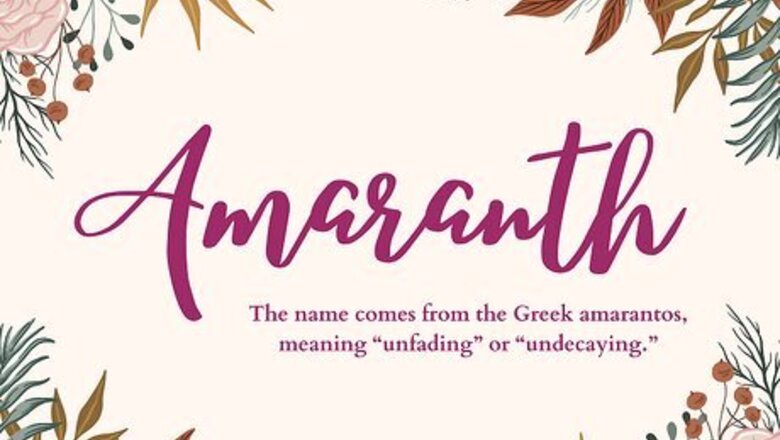
views
Amaranth
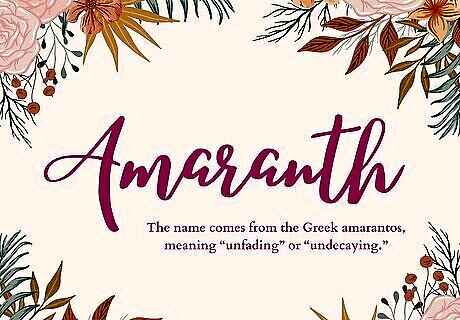
Amaranth is a reddish-pink shade (sometimes called amaranth red) named after a mythical, undying flower in Greek mythology. The name comes from the Greek amarantos, meaning “unfading” or “undecaying.” Amaranth is also the name of a food dye color used in treats like baked goods, frozen desserts, dairy products, and more. Hex code: 9F2B68
Aureolin
Aureolin is a bright, vibrant, almost-gold yellow color that’s sometimes called cobalt yellow. The name comes from the Latin aureus, meaning “golden.” It’s a popular color in painting and artwork and has a slightly luminescent quality, linking it to the concept of light. Hex code: FDEE00
Australien
This rusty, deep orange-brown color is named after the hues of the rocks and deserts of the Australian Outback. It first appeared in an 1897 guide called House Decoration as a new color for ladies’ dresses and was popular in Victorian English fashion houses. Hex code: CC9911
Banan
You don’t have to think too hard about what this color is—it’s the color of a ripe, yellow banana peel! Well, that’s the name for the outside of the peel. Paint company Benjamin Moore has designated Banan-Appeal as the pale yellow color of the inside of the peel. Hex code (Banan): FFE135 Hex code (Banan-Appeal): FCEBB7
Bastard-Amber
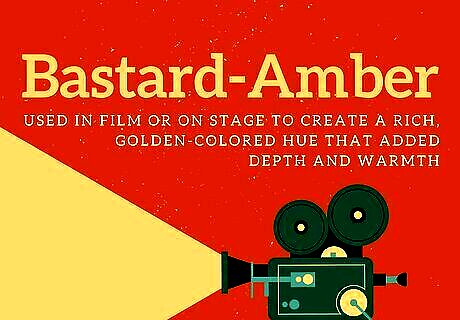
Don’t worry, we’re not throwing around any nasty insults here! In theatrical lighting, a “bastard” color refers to a colored gel or plastic filter that mixes primary hues to make a new color. “Bastard-amber” was used in film or on stage to create a rich, golden-colored hue that added depth and warmth to the actors and scenery similar to dawn or dusk. It’s a bit pinker than true amber, possibly due to a color-mixing error that looked flattering on some actors’ skin tones. Hex code: FFCB8C
Citreous
Calling all citrus lovers! Citreous is a lemon-yellow or greenish-yellow color (picture a lemon that’s almost fully yellow, but still slightly tinged with green). The name comes from the Latin citreus, meaning “of the citrus tree.” Hex code: FFF700
Coquelicot
Coquelicot is a borrowed French word meaning “poppy.” It describes the vibrant orange-red hue of the beautiful flowers (and sounds just as elegant to match). Coquelicot is redder and less orange than ponceau, which is also a French term for the color of orange-red poppies. Hex code: FF3800
Dragon’s Blood
This dull, gray-ish red (sometimes called Pompeian red) doesn’t come from real dragons (sorry to disappoint!). Instead, it’s the color of the resin from the fruits of palm trees, like the Malaysian palm or the dragon tree (hence the name). Hex code: 943B41
Drake’s Neck
No, not like the singer. A drake is a male mallard duck found in North America, Europe, and Asia. Drakes have an iridescent, bottle-green head and neck that inspired a rich green dye in the 18th century simply called “Drake’s Neck.” Hex code: 306588
Drunk-Tank Pink
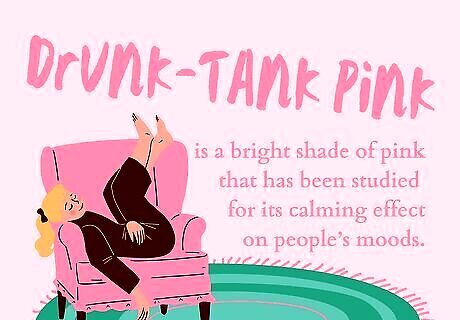
Also called Baker-Miller pink (after the US Navy officers who invented it), Drunk-tank is a bright shade of pink that has been studied for its calming effect on people’s moods. It’s been used in places from police holding cells and prisons to the locker rooms of opposing teams to subconsciously make people relax, become less aggressive, and refrain from unruly behavior. Hex-code: FF91AF
Eau-de-Nil
French for “water of the Nile,” this light, grayish-green hue represents the color of the Nile River as it winds its way through the Egyptian desert. The color was particularly fashionable in the West in the early- and mid-20th century (perhaps due to the Egypt-mania inspired by King Tut’s tomb in 1922 by archaeologist Howard Carter). Hex code: A4B887
Eburnean
“Eburnean” describes anything similar to the color of ivory. Ivory is considered a type of off-white with subtle, slightly yellow undertones. Hex code: FBE6C4
Falu Red
Imagine a barn in the US—you probably picture a somewhat bright, cheerful red. In Sweden and the surrounding Nordic countries, barns are Falu red, or a rusty-red color named after the Swedish town of Falun (formerly famous for its copper mines). Locals combined the byproducts of copper mining with linseed oil to produce Falu red paint, and the color took off as the go-to farm and barn color of the region. Hex code: 801818
Fandango
Fandango is a vibrant, deep magenta-pink color. Its named after the Spanish dance of the same name. The dance features spirited movements and energetic music, matching the energy of the bright color. Fandango is associated with passions, joy, and creativity. Hex code: B53389
Feldgrau

Feldgrau is German for “field gray” and describes the color of German military uniforms in the 20th century. The grayish-green color is ideal for blending into the surrounding terrain and looks serious and imposing. Hex color: 4D5D53
Flame of Burnt Brandy
This elegant and descriptive name refers to a mix of lavender, gray, pale yellow, and dark lilac, originally inspired by the yellows, oranges, and blues of flaming brandy. It was developed in the late 1800s as the dyeing industry became more sophisticated and designers were able to play with more colors. Flame of burnt brandy was one of these new and creatively named hues and was popular with dressmakers and consumers alike. Hex code: e25822
Fulvous
Fulvous is a dull, brownish-yellow color inspired by animals. It takes its name from the tawny feathers of the fulvous whistling duck but is also applied to lions’ manes and other warm, golden-yellow hues. Hex code: E48400
Gamboge
This yellow-orange color is named after the yellow gum resin from native trees in Cambodia and is used as a natural pigment today. The name comes from the Latin cambogium (the Latin name for Cambodia). It was first used in English around 1653. Hex code: E49B0F
Gingerline
This tasty-sounding shade is hard to pin down precisely. Inspired by the color of ripe kumquats, gingerline is a reddish-brown or reddish-violet color, though it sometimes appears more orange or yellow. Confusingly, it’s definitely not the color of ginger. Hex code: FFDD11
Glaucous
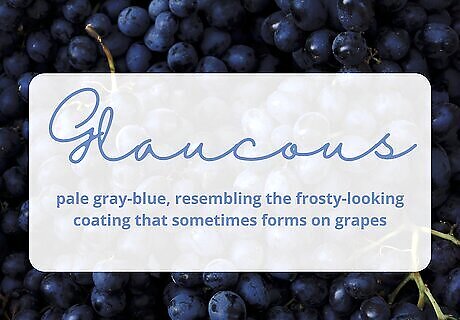
Glaucous is a pale, gray-blue or gray-green shade that resembles the frosty- or powdery-looking coating that sometimes forms on grapes and other fruits. It comes from the Latin glaucus, meaning “gleaming” or “gray.” Hex code: 6082B6
Heliotrope
No, it’s not a science term you need to know for your next pop quiz. Heliotrope is actually a vibrant shade of light purple, sometimes described as a reddish-lavender. The color is found in a number of flowers in the genus Heliotropium which turn their leaves to face the sun. The name comes from the Greek god of the sun, Helios. Hex code: DF73FF
Incarnadine
As a color, incarnadine originally referred to a pinkish-red or “flesh” color (like freshly cut meat). However, it’s sometimes thought of as a blood-red color due to a passage from Shakespeare’s Macbeth in which he uses “incarnadine” as a verb to describe the blood of his hands dyeing the seas red: “Will all great Neptune’s ocean wash this bloodClean from my hand? No, this my hand will ratherThe multitudinous seas incarnadine,Making the green one red.” Hex code: 792F24
Isabella
Isabella (sometimes called isabelline) describes an off-white, neutral, subtly yellowish-brown or grayish-yellow hue. Though the name sounds pretty, the (alleged) origin story of this color is a bit…unhygienic. Supposedly, the Spanish princess Isabella I of Castille refused to change her undergarments until the siege of Granada was complete during the Reconquista in the 1490s. The result was an off-white color which grew to be quite popular and sophisticated. Hex code: F4F0EC
Labrador Blue
No blue dogs here—this color is named after Labrador, Canada. Its name is inspired by labradorite, a grayish-blue, iridescent feldspar mineral first discovered in the region. Hex code: 7F9DAC
Lusty Gallant

Lusty gallant is a pale shade of red, similar to coral pink. The name originally referred to a popular dance in Tudor England and may have been given to dress colors to make them seem more exciting and enticing to potential buyers. Some other bizarre color names created to lure customers around the same time include goose-turd green, pease-porridge tawny, and the-devil-in-the-head. Hex code: FFCCCC
Mazarine
Mazarine is a deep, rich blue that’s associated with textile and ceramic decorating, particularly in the 17th and 18th centuries. The origins of the name are unknown—some suspect it may be named after the influential 17th-century French statesman Cardinal Mazarin, while others suggest it comes from the blue binding of some editions of the Mazarin Bible. Hex code: 273C76
Melichrous
Melichrous comes from the Greek word meli, meaning “honey.” Unsurprisingly, it describes the golden brownish-yellow color of honey! Hex code: F7E969
Mikado
Mikado is a deep, bold yellow color and is also the Japanese word for “honorable gate” (a title for the Emperor of Japan). This yellow color was reserved for the Emperor and the elite class, enforceable by a 618 CE law restricting who could wear the color. To skirt around the rule, non-elites would wear dull colored garments lined with vibrant colors they could show off in secrecy. Hex code: FFC40C
Nattier
Nattier is a deep shade of slate-blue popularized by French Rococo artist Jean-Marc Nattier. Nattier painted many women from King Louis XV’s court and featured the color in a number of his portraits. The most famous is The Comtesse de Tillières (“The Lady in Blue”), which may have inspired the color name “nattier.” Hex code: 9BC4BF
Phlox
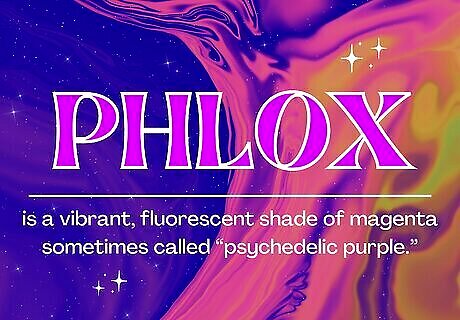
Phlox is a vibrant, fluorescent shade of magenta sometimes called “psychedelic purple.” The name likely comes from the phlox genus of plants, some of which bloom in bright pinks and purples. Hex code: DF00FF
Ponceau
Ponceau is a vivid, reddish-orange color you might see during a sunset. It may come from the Old French word pouncel, meaning “poppy.” It certainly is reminiscent of these beautiful flowers! Ponceau is more orange and less red than coquelicot, which is also a French term for the color of orange-red poppies. Hex code: C60800
Puce
This color might just look as gross as its name sounds. Puce is a dark or brownish-purple reminiscent of a scab or bruise. “Puce” means flea in French, and some believe the color name is associated with the mark left behind from a flea bite. Hex code: CC8899
Puke
We know what you’re thinking and no, it’s not the color of that kind of puke. In the 16th century, “puke” was a high-end wool fabric used to make clothing, and the word eventually came to describe the color that fabric was dyed. Dyes were inconsistent back then, so it’s hard to pin down the exact shade—most sources claim it’s a dark color between russet and black or a very deep and dark purple (definitely not a color you want your puke to be). Hex code: 7A5901
Quercitron
No, quercitron isn’t the name of a robot or a futuristic tech company. It’s actually just a shade of yellow, named after the dye made from the bark of oak trees native to eastern and central North America. Quercus means “oak” in Latin and “citron” refers to a grayish-green-yellow color. Put them together, and you get quercitron! Hex code: E5B03D
Rufous
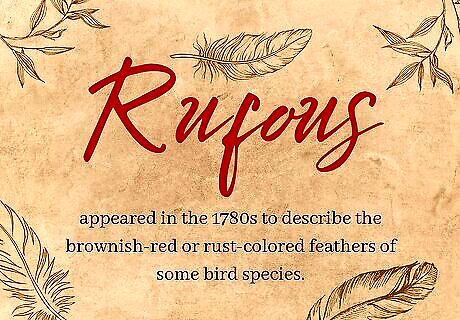
The color rufous appeared in the 1780s to describe the brownish-red or rust-colored feathers of some bird species. It probably comes from the Latin rufus, meaning “red-haired.” Although it’s an uncommon color name, there are several animals named after it, including the rufous hummingbird and rufous rat kangaroo. Hex code: A81C07
Sang-de-Boeuf
Sang-de-Boeuf is French for “oxblood” and describes a rich, deep, coppery red. The name was first applied to the color in the 19th century to describe a blood-colored pottery glaze, but the techniques used to actually make the oxblood glaze date back all the way to 13th-century China. Hex code: 4A0000
Sarcoline
Sarcoline means “flesh-colored” and is a pale, yellow-beige color that resembles some skin tones. The name probably comes from the Greek sarx, meaning “flesh” or “meat.” It’s an uncommon color in clothing and design, perhaps because it looks a bit too…skin-like for comfort. Hex code: FFDDAA
Skobeloff
Skobeloff is a deep, elegant shade of teal named after the Russian General Mikhail Skobelev, who wore a similar color during military campaigns. It’s deep blue-green hue is reminiscent of ponds, peacock feathers, and other natural phenomena, making it a soothing color frequently used in interior design. Hex code: 007474
Smaragdine
Smaragdine is a truly ancient word referring to a color similar to emerald green. Smaragd actually means “emerald” in Middle English, which probably came from the Greek smarágdinos, which probably came from the Sanskrit marakata (you get the idea—this color is old!). The name has been used in English since at least the 1300s. Hex code: 50C878
Solferino

Solferino is the color of a purple-red dye from Solferino in Lombardy, Italy. The dye was discovered shortly after the Battle of Solferino during the Second War for Italian Independence, hence its name. (Fun fact—magenta was named for the Battle of Magenta in the same war.) Hex code: 333399
Tyrian Purple
Tyrian purple is a vivid, purplish-red that was highly valued in ancient times because it was so difficult to make. The base of the color comes from the secretions of certain sea snails and was associated with royalty, especially in the Byzantine Empire (you may have heard of “royal purple” before). Despite its use by the wealthy and elite, the process of making this color from snail glands was dirty and stinky. Hex code: 66023C
Vantablack
Vantablack is technically a material, not a color. It’s a synthetic material made of carbon nanotubes that absorbs more than 99.96% of light that hits it. This makes it the darkest black substance ever made by man and the closest color to “true black.” Hex code: 000100
Verditer
Verditer (or verdigris) describes the green, rust-like discoloration that occurs on copper and brass (picture the modern day Statue of Liberty). It comes from the French phrase verte de terre, or “green of the earth” and has been used as a pigment since the 1500s. The color is most often used when talking about the verditer flycatcher, a turquoise songbird native to the Himalayas. Hex code: 6AC59C
Vinaceous
Attention wine lovers—this color is for you! Vinaceous refers to the color of red wine, so there’s no single exact shade that defines it. Thankfully, it’s easy enough to pour a glass and see this rich color for yourself! The word “vinaceous” has been used by English speakers (and wine drinkers) since the late 1600s. Hex code: F69A94
Viridian
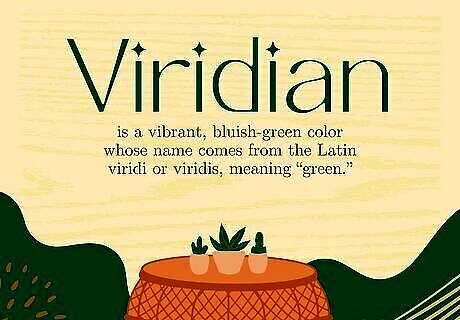
Viridian is a vibrant, bluish-green color whose name comes from the Latin viridi or viridis, meaning “green.” It officially became a paint color name in 1862. Hex code: 40826D
Watchet
Watchet is a very light, pale blue color. One theory suggests that the name comes from the town of Watchet in southwest England, where the alabaster-rich cliffs appear a pale blue color. But, it’s more likely that it comes from an old Belgian-French word, wachet, which means “royal blue.” Hex code: 8FBABC
Wenge
Wenge is a deep brown with hints of purple and black. It’s named after the wenge tree, which is native to central Africa. It’s an elegant color that’s used frequently in high-end furniture and flooring. Wenge is associated with quality craftsmanship, luxury, and sophistication. Hex code: 645452
Wheaten
As you may have guessed from the name, wheaten refers to the pale, yellow-brown color of wheat. Since wheat has been a crucial crop for human survival for millennia, it might not surprise you that this is one of the oldest color names in the English language—it was called wheten in Middle English and hwæten in Old English. Hex code: F5DEB3
Xanadu
Xanadu is a cool grayish-green color named after the native Australian plant Philodendron Xanadu, which has big, shiny green leaves. It’s the only color name to start with the letter X, making it truly unique! However, you’ve probably heard the word “Xanadu” in other contexts. Sadly, the color is not related to the musical, the Olivia Newton John movie, or the Mongolian city of Shangdu (also known as Xanadu). Hex code: 738678
Zaffre
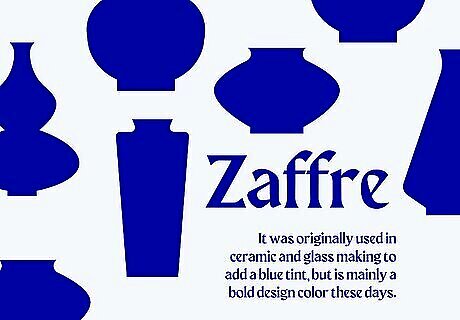
Zaffre is a striking, deep, cobalt blue that’s been used since the 1500s. It was originally used in ceramic and glass making to add a blue tint, but is mainly a bold design color these days. The name comes from the Italian word zaffera, which is descended from the Latin word for “sapphire.” Hex code: 0014A8












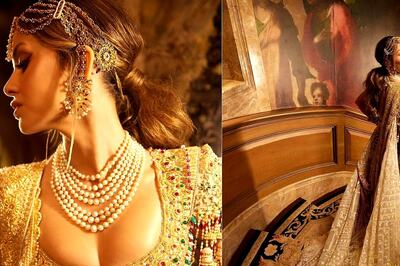

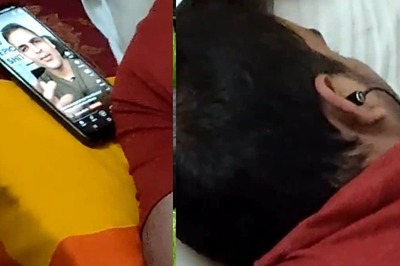

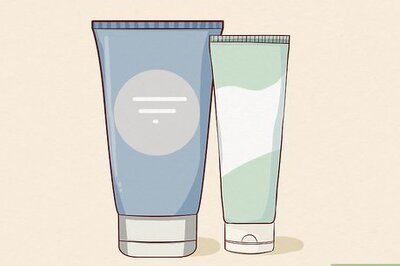

Comments
0 comment